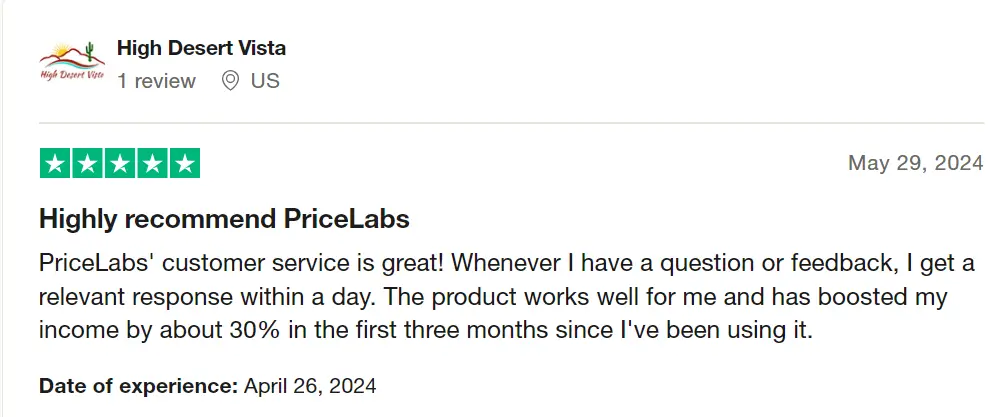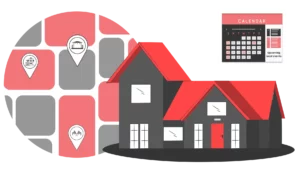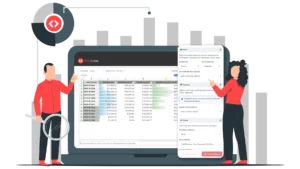Updated: August 28, 2024
Research indicates that more property managers are using management software to improve revenue strategies, save time, and reduce risks of human error. It’s one of the key growth drivers for the global property management market. Thus, selecting a revenue management platform with the best features is vital to customizing the pricing strategy for vacation rentals.
If not, vacation rental property managers risk making costly errors by creating pricing strategies manually. Revenue Management Software (RMS) bridges this gap by offering data-backed suggestions to customize the booking price for your vacation home at the right time.
However, not every RMS will ensure improved daily operation and profit margins. This blog will help you avoid selecting a revenue management platform that doesn’t suit your needs. .
Selecting a Revenue Management Platform: Mistakes to Avoid
A common mistake new property managers make is not seeing the red flags before choosing an RMS. Some of these red flags include:
1. Complicated User-interface
If using the revenue management software even after a demo seems complicated, that’s a red flag.
An RMS should have a sleek and simple user interface with logical navigation. An intuitive design lessens the learning curve for you and your team. With less time spent on learning and troubleshooting, you’ll focus more on the revenue management strategy to improve bookings.
2. Doesn’t Support Your Preexisting Tech Stack
An RMS is only cut out for your STR business if it integrates with your preexisting PMS, CRM, and booking channels.


Your tech stack works more effectively when they’re connected. It streamlines your workflow and enhances operational efficiency by automating data sharing across other key solutions. Here’s how:
- Connecting RMS with short-term rental Property Management Systems (PMS) allows for real-time updates on room status and guest details.
- An integrated RMS and Channel Managers ensure that nightly rates and room availability are the same across all OTA channels.
- RMS and customer relationship management (CRM) integration analyzes past guest interactions to create personalized experiences for repeat bookings.
Seamless, two-way integrations ensure a cohesive approach to managing your vacation homes’ revenue plans. Consider choosing RMS tools like PriceLabs that integrate 100+ PMS and Channel Managers, including Guesty, Hostfully, Lodgify, Hosteeva, Beds24, and many more.
3. Lack of Customization
Say no to an RMS that can’t scale with your STR’s growth and support future expansion. An inflexible RMS won’t allow customization tailored to your business needs.
On the contrary, the right revenue management software will automate pricing adjustments based on predefined rules, current market conditions, and anticipated demand. It’ll understand your market positioning to adapt pricing strategies accordingly. This way, your rates remain competitive and optimized for revenue per available room (RevPAR) without manual effort.
As Tangy Mgmt. Managing Director Steve Turk said, “Your STR revenue will improve when you track your per-night rate and the occupancy rate daily, not monthly.”
So, focus on selecting a revenue management platform that adapts to different property types, sizes, and market conditions.
4. Lags in Real-time Data Analytics
Software lacking real-time data analysis means you won’t gain insights into market dynamics. Data analytic reports are integral to STR revenue management, from an occupancy forecast to adjusting room pricing.
Suppose an RMS doesn’t provide real-time revenue optimization, and you have a sudden conference in your market. Without instant insights into key metrics and market trends, you’ll miss out on opportunities to maximize your revenue for individual nights.
So, secure a stronger position for your vacation home by selecting a revenue management platform that prioritizes market insights, data, and trends.
For instance, PriceLabs Dynamic Pricing Software’s Hyper-Local Pulse algorithm automatically recommends optimal room rates by reacting quickly to market changes, real-time demand, and occupancy levels. Under the Neighbourhood Data tab, you’ll also find charts and visualizations to get a clear overview of performance metrics, future occupancy, and pricing, which ultimately helps create effective revenue management strategies.
5. Can’t Evaluate Comp Sets
Never select an RMS platform that keeps you in the dark about your direct competitors. You want your vacation homes to be affordable and affordable.
Imagine this: It’s a big-ticket Paris Olympics event in your region and an opportunity to capitalize on the demand by raising your nightly price. However, the RMS failed to adjust pricing based on unused capacity and comp rates for last-minute bookings.
Overlooking competitor pricing leads to misaligned rates and revenue losses. Thus, an RMS that auto-tracks your comp set data is a smart choice for STR managers to outperform competitors.
6. Relyies too heavily on a single data source
A comprehensive revenue management strategy relies on diverse data sources to provide a complete picture of market trends and dynamics. For example, RMSs like PriceLabs draw their data from Airbnb, Vrbo, Booking.com, and Key Data to give accurate market insights to property managers.
Effective pricing decisions require various data inputs to capture current market conditions and future trends. Ask potential providers about the range of data sources they use and their plans to incorporate new data sets. This will ensure you have the most accurate and forward-looking insights to make informed pricing decisions.
7. Can’t Scale With Your Business
Are you a small property manager, or do you manage hundreds of listings? Does your revenue management platform can scale according to your business?
Some providers cater primarily to small property managers, which can be limiting if your portfolio expands. When evaluating a platform, inquire about their customers’ average listings. If the provider predominantly serves small property managers, they might lack the necessary sophistication to support more extensive, complex portfolios. Even if you’re managing a smaller portfolio now, you want a partner who can grow with you and adapt to your evolving needs, providing robust support and advanced features as you scale.
8. Unsatisfactory Training & Customer Support
A major red flag is an irresponsive support team or lack of ongoing education. What if you need urgent help understanding, optimizing, or integrating the RMS solution? Poor customer assistance and delayed resolution will lead to revenue loss.
Besides, ensure the vendor provides training programs, including system setup, utilization, and ongoing support. Otherwise, you’ll struggle to guide your team through the system’s features and functionality. Your RMS should also have regular webinars or training sessions to update you about new features.
Thus, compare each service provider’s help desk availability, training system, and response times. Bonus point if a vendor offers a dedicated account manager to address your needs and issues.
9. Bad Customer Reviews
This is obvious but non-negotiable. An RMS without positive reviews is a lost opportunity. User feedback helps gauge the vendor’s reputation, product performance, and customer service. You can read about customer reviews for your vendor on TrustPilot and Capterra.
So, read testimonials on Google reviews, social channels, and review forums to assess the vendor’s track record.


Another option is to look for case studies on the official websites to understand the actual experiences of other STR managers with the software.
Conclusion
Maximizing your vacation rental income hinges on selecting the right RMS. Remember, an easy-to-use platform compatible with your existing tech stack removes bottlenecks in your revenue management workflow.
Moreover, selecting a revenue management platform with robust features like price analysis, reservation reports, channel analysis, market segmentation, and competitor reviews will help you optimize occupancy and profitability.
FAQs
1. What is a revenue management platform?
A revenue management platform enables vacation rental businesses to customize room pricing strategies using market data and demand forecasts.
2. What are the critical components of revenue management?
Five key practical STR revenue management elements are forecasting, data collection, pricing optimization, market segmentation, and competitor analysis.
3. How important is a revenue management system?
RMS is a valuable tool for short-term property managers to optimize room pricing, boost bookings, and drive higher profit margins. Simply put, it facilitates better-informed revenue management strategies. Besides, real-time insights eliminate the risk of manual errors, which helps property managers save time and increase efficiency.








